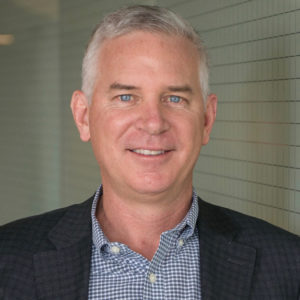May 10, 2022
Watch
Listen
Read

Mike is a successful serial entrepreneur, having started and sold several large mobile and internet companies over the past 20 years.
McSherry currently serves as CEO of Xealth, a digital prescribing and analytics platform integrated into healthcare electronic medical records (EMRs). He and his team incubated Xealth at Providence St. Joseph Health while he was an Entrepreneur in Residence.
Prior to Xealth, McSherry was CEO of Swype, an innovative touchscreen keyboard installed on over 1 billion smartphones and tablets, which he sold to Nuance for over $100 million in 2011. McSherry was also co-founder and ran product for Boost Mobile both in the US and Australia. In the US, Boost is now Sprint’s prepaid service with several billion in annual revenues. Prior to co-founding Boost, he co-founded Zivo, which was the largest web development company in Australia and New Zealand with over 300 employees. McSherry moved to Australia with Microsoft, where he ran the MSN portal and e-commerce activities. He also held several product roles within Microsoft in the US.
Mike is an active angel investor, board member, mentor to startup companies and non-profits. He lives in Seattle with his wife, 2 boys, dog, and active travel and adventure pursuits. He’s lived in 4 countries, visited over 40 and went to William & Mary college in VA.

Brandon is the Co-Founder and CEO at Nava, a modern benefits brokerage on a mission to provide high-quality, affordable access to healthcare to all Americans. By melding cutting-edge tech solutions with deep industry expertise, Nava aims to fix healthcare, one benefits plan at a time.
Prior to Nava, Brandon co-founded VTS, a tech-driven leasing and asset management platform that transformed the commercial real estate marketplace. Trusted by over 45,000 brokers and asset managers around the globe, it’s now used in over 50% of all office buildings in the United States and is consistently ranked one of New York’s best places to work.
Outside of work, he enjoys retreating into nature, and is passionate about backcountry skiing, mountaineering, and trail running.

Sean is an entrepreneurial technology executive dedicated to leading exceptional teams to distribute inventions that enhance our quality of life, the survival of our species, and the health of our planet. He is focused on forming and operating early to growth stage, high tech ventures to achieve significant scale, commercial success and fulfillment of a meaningful mission. His goal is to create >$10B of enterprise value in the next 10 years with disruptive ventures that substantively leapfrog mankind towards the UN Sustainable Development Goals (https://sustainabledevelopment.un.org) and measurably advance our Social Progress Index (https://www.socialprogress.org/). Beyond that, Sean aspires to leave a legacy as a world-class CEO and polymath whose organizations have materially enhanced the fabric of our everyday lives.
Sean is currently Founder & Chief Executive Officer at HealthTap, a virtual-first, affordable urgent and primary care clinic, providing top-quality primary care equitably nationwide to all Americans, with or without insurance. Over the decade, Sean served various leadership roles at the organization, including COO and CPO, responsible for envisioning and building its proprietary, easy-to-use, and innovative apps and electronic medical record, applying Silicon Valley standards to effectively engage consumers and doctors online to make trusted health information and ongoing care accessible, convenient, and efficient for all.
Prior to that, Sean specialized in digital consumer engagement — as founder & executive of GXStudios, a venture-backed, team-based casual games platform, and PayoutHub, a social game-monetization platform that was acquired. Sean advises startups regularly through venture capital firms, Stanford’s Center for Entrepreneurial Studies, and the Yale Entrepreneurial Institute (now “TSAI City”), Yale University’s official incubator and fellowship program for entrepreneurs (which he co-founded). Sean holds numerous honors and inventions in the fields of health informatics, drug delivery, genetic testing, medical devices, and new industrial polymers.
Sean earned an M.B.A. from Stanford Graduate School of Business and a B.S. (with Distinction) in Biomedical Engineering and Pre-Medicine from Yale University. He’s a futurist by nature, an inventor at heart, a scientist by training, an engineer by trade, and a designer by hobby.
Scroll
Gary Bisbee, Ph.D. 00:31
Entrepreneurs are unique individuals. They must be fully committed to a vision, be willing to endure the many risks of starting and shaping a business, develop an understanding of the marketplace, raise capital, envision and refine a business model, and serve as the company’s best sales lead. In normal times, the healthcare market is complicated, highly regulated, and with conflicting incentives. However, these are not normal times. In addition to the above-mentioned characteristics, healthcare is currently transforming, still reacting and adjusting to COVID, including significant workforce issues, and we have an uncertain economy and political climate. Today, we have compiled insights from three founders, describing how they think about innovation in the healthcare marketplace. To begin we will hear from Mike McSherry, the founder and CEO of Xealth. Next, we will turn to Brandon Weber who is the co-founder and CEO of Nava. We wrap up with Sean Mehra, the founder and CEO of HealthTap. Now, we will lead off with Mike McSherry.
Mike McSherry 01:39
I’ve never sat in front of as many smart people in rooms and environments before where they all head nod, yes, no brainer, yes, we need to do it. And yet it still doesn’t happen for 6, 9, 12 months for any number of reasons. And you don’t really see that in the world of mobile. Every single phone manufacturer has to ship a new device every single year. And that new device has to have a dozen new features on it to sell it and market it. And they’re just on this absolute fast track and deadlines of shipping, shipping, shipping with new tools and technology, whereas healthcare is like, we can get to that next year. We can get to that next year. We can get to that next year. And that, legacy debt of pushing things downstream have led to where healthcare, education, and government are the three biggest laggards in technology adoption in the world, or at least in the US. And it’s crazy. You’ve got these MRI machines that can identify down to that atomic level of bone density structure. You’ve got magic pills that can solve diseases. You’ve got all these great, great technologies that are on the cutting edge, yet we still use fax machines. We still make phone calls. We still go down to the lowest common denominator
Gary Bisbee, Ph.D. 03:06
In terms of innovation, change is hard in any industry. However, healthcare has special characteristics that influence adoption of innovations such as variable reimbursement plans, conflicting incentives, and government regulations. Understanding the ecosystem is top priority for any entrepreneur. Next, we will hear from Brandon Weber.
Brandon Weber 03:30
What we observed while we were doing our walkabout through healthcare, just basically trying to answer the simple question, why is healthcare the only marketplace that can deliver 10% to 15% cost increases, and a worsening product and user experience? It defies the logic of most kind of major marketplaces. And I think what we observed was that, contrary to maybe our going in assumptions, there was an absolute, combinatorial explosion of innovation happening in healthcare and the supply side of healthcare. And talking to digital health entrepreneurs under kind of every slice of care delivery, doing amazing things, like really cool cutting edge stuff that we as healthcare consumers have never kind of gotten access to. And it was kind of any direction you’d go. You’d see this kind of same dynamic of, oh my gosh, there’s an explosion of innovation here. But that innovation is not making its way into the hands of the buyer. So kind of the thesis that emerged out of this observation that like, wow, oh, my gosh, there’s so much cool stuff happening here, the future might already be here, it’s just not evenly distributed, led to kind of, I think, our core thesis, that the bottleneck to dramatically improving the healthcare marketplace and making it more consumer and buyer centric..there’s not a lack of innovation on the supply side, not that we’re missing great point solutions, we’re missing, you know, a better alternative to the traditional insurance model. It’s a gummed up distribution layer. It’s a gummed up marketplace layer that is the bottleneck.
Gary Bisbee, Ph.D. 05:16
Brandon noticed that innovation in healthcare benefits wasn’t successfully reaching customers. By understanding the marketplace, Brandon saw an opportunity to drive efficiency and create value. Understanding the players and how they interact is fundamental for entrepreneurs in any industry. To wrap up, let’s hear from Sean Mehra.
Sean Mehra 05:39
There is a shortage of a supply of let’s just call them providers for now because you can throw nurses into the bucket too and other types of healthcare professionals, but there’s a shortage of supply. There’s a growing demand. That equation’s never going to work unless a few things change. Either you start making more supply, you start shrinking your demand, or you make the supply and demand somehow meet each other more efficiently, assuming not every person that needs a provider connects with a provider. Or you make each unit of supply more productive than before. So let’s just break those down for a moment, those four things. Just very logically, demand is not going to decrease. As the world’s population increases, as we age, the need for healthcare will grow. I think that is an inevitable force that will remain true until some eventuality where the world population shrinks. The second one. Grow more supply. Well, in this case, that’s building medical schools and educational institutions that create more providers each year. Those things are measured in decades. So, we should certainly be doing that. It’s just not going to be the solution for us in the next 30 to 50 years. So then that leaves us with the next two. The next two are, you either make supply and demand transact more efficiently, or you make each unit of supply more productive. Telehealth, classic example of bucket number one. Today, supply and demand doesn’t always transact efficiently because time and space separate us from the provider. They’re either sleeping or on vacation when we need to talk to them. There is a doctor, but he or she is a hundred miles away when the one next to me is busy. There’s all sorts of barriers that prevent us from finding that supply when we’re sick in that moment when we need it. Telehealth helps. I’m just giving it as an example of a technology that makes the transaction more efficient. The second bucket, how to make providers more productive. Well, you have all this buzz around technologies like AI. We’re very early in those days, but eventually, trust me, there will be not just algorithms that do some part of the doctor, because I think that’s still a bit more futuristic. There’s simple procedures you can start doing yourself. There’s so many connected devices that you could operate on your own person that doesn’t require a provider doing it to you like it used to 50 years ago. There’s so many testing kits you can order and just administer yourself at home that don’t require providers. So there will be technologies that enable us to do more and more things without a human physician or provider. And remote patient monitoring, classic example of a combination of devices, sensors, algorithms that supplement what physicians would do that enables them to proactively monitor a larger patient populations than they ever could if they invited people behind closed doors one-on-one. And I think the next five to 10 years are going to be characterized by those two innovations. There’s a macro economics idea I remember from back in high school called the production possibilities frontier. In a given society, there’s just a frontier that is the maximum possible output of any given unit of good or service that a country produces. The only thing that moves a production possibilities frontier out is the advancement of technology. It’s technology. So, if I had to, in this moment here for you define what is healthcare technology, healthcare technology is that which makes healthcare supply more productive, more efficient, and meet its demand more efficiently. And that’s the only thing that’s going to help us overcome the supply shortage.
Gary Bisbee, Ph.D. 09:25
Sean provides us a map of where healthcare entrepreneurs can find opportunity. Healthcare needs innovation to expand the production possibility frontier and increase the efficiency of existing healthcare services. Understanding the relationship between the supply and demand of healthcare services reveals the greatest market opportunities. Every good business needs a solid business plan that incorporates the ecosystem’s unique features. If you are interested in more financial and personal insights from leading innovators, follow Day Zero, where we share the wisdom, ambitions, and visions of healthcare entrepreneurs.
For exclusive access to Day Zero content and program updates, subscribe here.